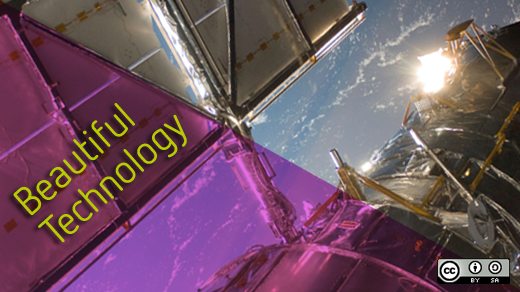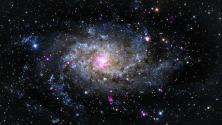The offer was too good to be true. Three whole weeks at the NASA Glenn Research Center and an invitation to come back. I could scarcely believe it when I read the email. I immediately forwarded it to my parents with an addition of around 200 exclamation points. They were all for it, so I responded to my contact, Herb Schilling, with a resounding “YES!”
Driving to work my first day, NASA was fairly hard to miss. There's a giant hangar that says “NASA” on the roof visible from land and air. NASA Glenn Research Center is where I spent an incredible three weeks of my summer this year. I was assigned to work in the GVIS Lab on Graphics and Visualization. The work of the people in the GVIS Lab is to help researchers and engineers at NASA and outside partners with their projects by using advanced computer technology, including visualization.
Before I left NASA this summer, I interviewed computer scientist at the GVIS Lab, Herb Schilling, about how the lab uses open source.

How did you start working at NASA? What do you do there?
After working in industry for 8 years, I started working at NASA in 1991. I worked for a group that wrote computer programs for scientists and engineers. I have done that for most of my career but along the way, I worked on knowledge management systems and the Web. Today, I work on the Scientific Computing and Visualization Team in the Information and Applications Division which is part of the Office of the Chief Information Officer for the United States federal government.
Tell us more about the lab's capabilities.
The GVIS Lab was originally focused on creating visualizations of data for scientists and engineers. That is still part of the Lab’s work but in addition to that, for several years the team has been using visualization, usually in 3D, to create interactive displays that help explain NASA technology and facilities to the public and others. Also, the Lab has moved into two new areas. First, as a result of working with the Kennedy Space Center on the computer interfaces for a new Launch Command Center, the team is now developing interfaces using natural user interfaces (NUI) devices such as the Microsoft Kinect, Microsoft Perceptive Pixel display, and the Leap Motion controller. Finally, there are several projects that are making use of low cost consumer computer devices such as the Kinect and Raspberry Pi to do data acquisition and display.
The best part of the Lab is the GVIS Team that supports it!
Do you use open source in the GVIS Lab?
Yes! We use a lot of open source. The short list includes Python, GitHub, Processing, VLC, jQuery, D3.js, Blender, VRUI, ImageJ, VMD, ParaView, MeshLab, VNC, ImageMagick, SWIG, Emacs, and many more.
We like using open source because it gives us more flexibility because of licensing and allows us the opportunity to contribute back to the community using our expertise.
Our favorite open source project that we work on is OpenMDAO. This project is run out of another Division at our Center. Our team provides some programming support. OpenMDAO is an open source Multidisciplinary Design Analysis and Optimization (MDAO) framework, written in Python. You can use it to develop an integrated analysis and design environment for your engineering challenges.
What can be done with low cost computing and open source?
Maybe the best answer to that question is to give some examples.
Inspired by Oliver Kreylos’ Augmented Reality Sandbox, the GVIS Lab is working with some researchers to use the Microsoft Kinect and Processing to develop a real-time measurement and display of pressures in a water table that is used to test jet engine parts.
Also, Lauren, you worked this summer to create a proof-of-concept of a Raspberry Pi Wall! Here is a blog post about that on our GVIS website.
What advice would you offer to people looking to work at NASA?
You need to be passionate about NASA, space and/or aeronautics, and also be very committed to working "for the benefit of all," which is the NASA motto. If you have that, try to take advantage of all the educational programs that NASA has including internships. Finally, be persistent! I applied probably 7 times to NASA, or one of its support contractors, before I finally got a job there.







Comments are closed.